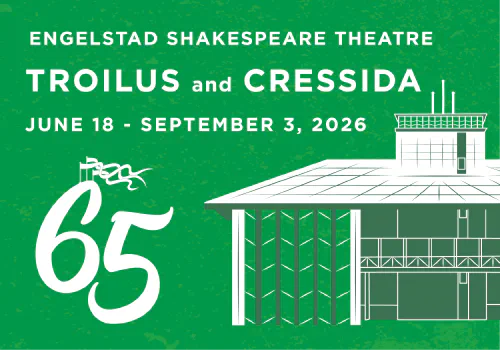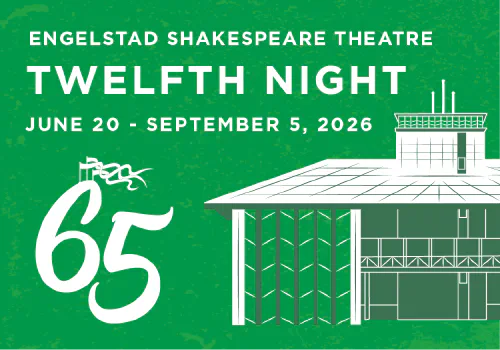By Ace G. Pilkington
According to the Accounts of the Master of the Revels, the first performance of Othello (by a playwright identified in the magnificently casual spelling of the time as Shaxberd) was on 1 November 1604; it was probably written around 1603. This is the period when Shakespeare stopped writing comedies and histories, and concentrated on tragedies (until, that is, he switched to romances). In Peter Levi’s words, Shakespeare was “constantly wrestling with the forms he used and . . . wore out form after form to the bone” (The Life and Times of William Shakespeare [New York: Henry Holt and Company, 1988], 246 7). Certainly Othello, which is as compounded of contradictions as its title character, is one of those wrestlings with form, making a tragedy hold and do more than was expected.
Even Shakespeare’s sources show these contradictions. The plot comes from Giraldi Cinthio’s Hecatommithi, but, in addition, Shakespeare took material (among many other places) from Philemon Holland’s translation of the Naturalis Historia by Pliny and General History of the Turks by Richard Knolles. The choice of subject was also designed to appeal to the newly-crowned King James, who had written a poem called Lepanto about the 1571 battle where a Turkish fleet was destroyed by a Christian force. So far, this sounds natural and consistent, but Shakespeare’s names for the characters (only Desdemona is christened by Cinthio) are another matter.
Othello’s name has been plausibly traced to the 1601 version of Ben Jonson’s Every Man in His Humour (in which Shakespeare probably acted). The jealous husband in that play is named Thorello. (There are also a Prospero and Stephano, but that is another story.) Othello’s situation, as well as his name, has a comic subtext. He finds himself first with the difficulties of the traditional comic hero—a willing young woman and furious father. Next, he changes roles, but he is still acting a tragedy in a building with a comic foundation. Now, he has become (like Ford in The Merry Wives of Windsor) a husband who mistakenly believes he is a cuckold. As Dennis Kay points out, “There is a clear debt to the commedia dell’arte, which visited London on several occasions, and from which the relationship between a bombastic soldier and his cunning, self-conscious, audience-wooing servant could have been derived” (Shakespeare: His Life, Work, and Era, [New York: William Morrow and Company, Inc., 1992], 295).
Iago’s name, on the other hand, is the Spanish form of James, and not any James but St. James the Moor slayer (as Barbara Everett argues in Y**oung Hamlet: Essays on Shakespeare’s Tragedies, [Oxford: Clarendon Press, 1919], 190 1). It was, perhaps, a dangerous compliment to pay to a king, even one who enjoyed showing off his scholarship as much as King James did. However, not only did Shakespeare survive the danger, he also repeated the offense in Cymbeline, where the villain is Iachimo or little Iago.
Nor is Othello merely made from tragic and comic elements. It also employs a number of the conventions of the romances, including the plot pattern that Northrop Frye identified in Anatomy of Criticism as the green world: “The action of the comedy begins in a world represented as a normal world, moves into the green world, goes into a metamorphosis there in which the comic resolution is achieved, and returns to the normal world” ([Princeton: Princeton University Press, 1973], 182).
The pattern is clearly present in Shakespeare’s romances and romantic comedies; it is, after all, one form of the debate between court and country, a part of the pastoral mode. But it also turns up in less likely places: not only can one find Hermia and Rosalind journeying here but King Lear as well. Othello is another variation on the pattern, which begins this time in Venice, the ultimate example of a city cut off from the country and the country’s means of subsistence.
Othello himself is a character out of a romance who speaks of “the Anthropophagi, and men whose heads / Do grow beneath their shoulders” (1.3.143 44) as things that he has seen. Othello’s wooing of Desdemona, like the prince of Morocco’s quest for Portia is an expected episode in the life of a romantic hero.
A. D. Nuttall in his excellent discussion of the play as domestic tragedy says, “Othello is the story of a hero who went into a house” (A New Mimesis: Shakespeare and the Representation of Reality, [London: Methuen, 1983], 134). But it is also the story of a hero who went from the super-subtle court of Venice through a tempest to the green world of an island. The pattern is not completed; Othello does not return; instead, he finds his paradise and perdition awaiting him there.
In this world of conflicts, Othello’s blackness is not accidental or simple. It identifies him as what Muriel Bradbrook calls a “bogeyman,” descended from the medieval stage devil and linked with the Machiavel (the conscienceless politician whom many English readers found in Machiavelli’s The Prince), both of them dangerous beasts–lion and fox–force and fraud, “The Blackamoor thundered with voice and tread, his costume was gorgeous, his feathers tossed high, he brandished a scimitar” (“Bogeymen, Machiavels, and Stoics,” in Aspects of Dramatic Form in the English and Irish Renaissance, [Sussex: The Harvester Press, 1963], 93). His alliance with the Machiavel is an expected danger with a predictable outcome (a subconscious fear exorcised): “Such threatening alliances between Italian and Jew, Turk or Blackamoor, generally end in a masked fight; evil at last eats up itself” (Bradbrook 98). And here, of course, there is another layer of contradiction. When Shakespeare wrote his play about a noble Moor, England was at war with Spain. The Moors were Spain’s enemies and therefore the allies of England—Christian warred with Christian while Moslems and Christians cooperated.
Othello is linked not only with romance but also with the emblem tradition (adage, epigram, and pictorial comment). Othello as hero and as Desdemona’s husband is part of the traditional juxtaposition of solider and lady, but in his case it is a seeming paradox, the union of black and white, civilized girl and barbarian man.
In many ways Othello is the largest contradiction in this contradictory play, as Shakespeare uses and transmutes the multiple genres he employs. The Moor, who is the expected villain, has become the hero; the barbarian is a general who commands the armies of super-civilized Venice; the man whose sympathies would seem to be with the Turks is their scourge and not their supporter. The energy for the play’s forward motion comes as Othello shifts from one emblem—his contradictory conjunction with Desdemona—to another, the unnatural naturalness of his partnership with Iago. The old league of Moor and Machiavel is once again established. And whatever else Othello is doing in his final scene—reaffirming his place in a romance by telling one last tale or making a final noble gesture expressing his true nature—he has become a human emblem for the turbulent forces (psychological and dramatic) that have destroyed him. He is, at the last, defender of Venice and her Turkish enemy, true lover and love’s murderer, monster and monster killer, a Stoic and despairing suicide. He is, in fact, so filled with contradictions that it is hard to believe he is merely a created character and not a real human being.










